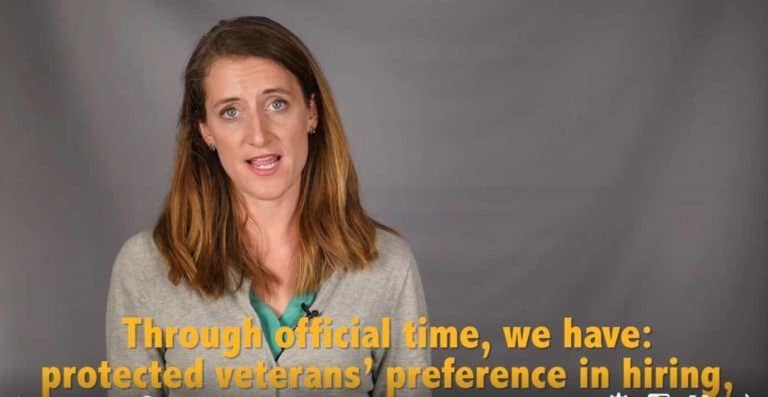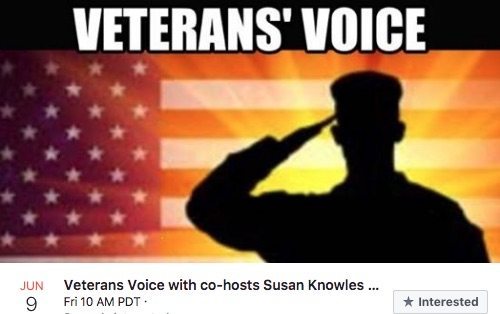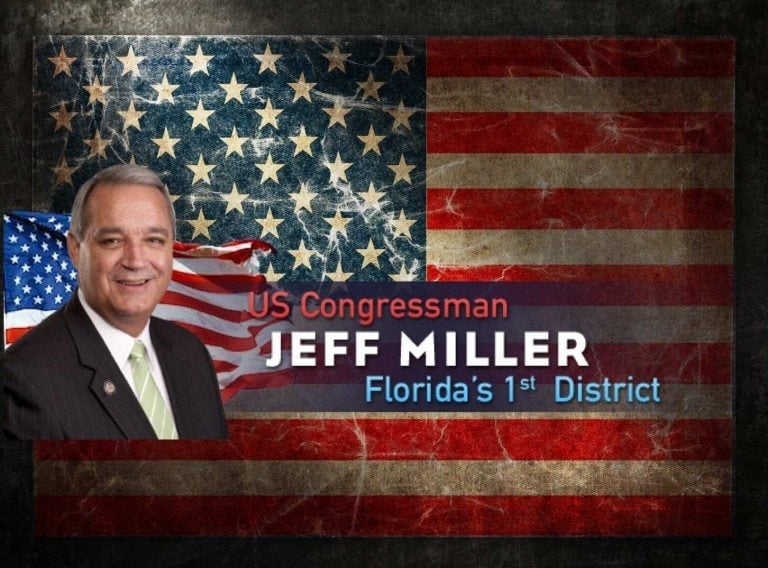Up to Speed? EHR Modernization Effort Hitting Roadblocks
A new Congressional effort is underway to put vets’ electronic health records (EHR) on the same system as the Pentagon. Makes sense, right? (Why didn’t we already have that?)
But like most government initiatives, this project is likely to take a few years and cost a boatload of money. The House already assigned this thing a subcommittee.
I don’t know about you, but to me the word “subcommittee” does not inspire confidence that the project will hit completion in a timely fashion. Pretty much the opposite of that.
But if it can’t get done quickly, the subcommittee is at least around to oversee it going RIGHT. The VA’s been down this road before, and it hasn’t been pretty in the last six years or so. $1.1 billion in squandered efforts to revamp outmoded systems.
This time, they’re determined NOT to waste taxpayer money, and get our records visible on the best database they can find. The $10 billion contract went to an entity called Cerner Corp., who promises a seamless data-sharing program for all VA hospitals to use.
An additional $6 billion is estimated for infrastructure costs, i.e. “The Cloud” isn’t really a cloud. It’s a building full of computer servers that hold your data. And you can bet it costs money.
Congress is concerned that, while they’ve committed to overseeing this project, the VA itself is devoid of some of its most important people. It’s hard to move projects forward when no one in the Executive Branch is around to sign off on important decisions.
(Talking about the bureaucrats here. The bureaucrats are Executive Branch.)
Robert Wilkie is set to be confirmed as VA Secretary (and stay tuned for more on that polarizing pick), but even if that goes well, Deputy Secretary and Undersecretary posts are still empty. We might have our beef with the bureaucrats, but the fact is, somebody’s got to update all this patient info.
They’re it. Bureaucrats are not usually what we like, but on projects like this, we can be glad if they’re what we’ve got. This vet is worried right now. Seems like they’re what we don’t got.
You the readers have been following this issue quite closely. We’ve posted on it before and gotten back some great comments. User namnibor is clearly unhappy with this $10 billion Cerner deal, and reminds us that Robert Wilkie approved it!
“10 billion reasons Wilkie should *NOT* be VA Suck,” you said. This contract was also approved just in time for Memorial Day… what a lovely token of appreciation for all the boots on the ground.
“Put a revolving door on the White House,” says Nexdeceptus. I mean, we’re talking about the military-industrial complex here. “Revolving door” is literally a recognized phrase that people in politics use to describe the way these officials get hired, fired, transferred… you name it, between the private sector and the VA.
So Nexdeceptus… you’re trying to condemn this, and we hear and agree with that. But it’s pretty tough to make the government feel bad about a term they’ve freely used since the Ike administration.
Another great moment from namnibor: calling all the teams and contractors “stakeholders.” Not only is that an excellent pun, but it cuts right to the point, doesn’t it? Sit at the table, smile and nod, go home, eat a big ol’ steak. You deserve it, buddy.
Keep your eyes peeled, keep the comments coming, and say what you see on the left, right AND center. You all are an incredibly diverse group of readers when it comes to politics. But what we all have in common is our commitment to serving this country.
Hang onto your hats. The EHR overhaul is gonna be a monster.






Private sector ‘Baby VistAs’ have been doing very well thank you very much. Many, many upgrades, features, and advancements exist that VA either doesn’t have, doesn’t care but should, or refuses to deploy because of politics. Now they are calling it quits on VistA only because of a failure of leadership, not of software since it works and continues to be developed in the private sector as commercial software. Cerner will take much longer and be much more expensive than estimated while being a step backwards and a huge waste of money for taxpayers. Veterans can change this bad situation for the better by advocating incremental upgrades to VistA that have been ignored or delayed for so long.
I am just a Marine Grunt,but even I know anything run by the Liars and Thieves in the Congress and Senate,they can not run the Government efficiently without Stealing Money from Social Security in the Billions our money we paid in weekly and they did not and were not supposed to touch it,but they can Feed and House Illegals while many Veterans remain Homeless and then they complained SS was going Broke,why do we never hear the Congress and Senate complain that Welfare os Going Broke??
Give the keys to the Henhouse to the Fox and this is what happens!!
Semper F
Bob, I agree, so true, excellent post!
Your SS is going to pay for this administration’s huge tax cuts for the already extremely wealthy – not to illegals. It’s called trickle down. The trouble is, none of ever makes it to the bottom where it would do the most good. Give a poor man money and he’ll spend it creating demand for goods and putting people to work creating more goods. Give a wealthy man money and they’ll stash it away Scrooge McDuck style. No trickle down – end of story. The wealthy and corporations are the culprits calling all the shots today. Congress is just their enabling puppets.
Having worked in the user hardware end of the roll-out of the VA’s initial phases of computerization, I believe the inception and goal of the software was miraculous. It was way ahead of it’s time but as it came into fruition, congress got involved and demanded VA get out of the software development business. They wanted to contract out all that work to their friends in exchange for a trip through that revolving door and campaign donations. If the VA programmers were still maintaining and updating VistA as intended, the issues that plague the VA today would have been dealt with. The VA approached DoD on more than one occasion asking them to join the VA in development of software that could share information between the two. DoD refused those advances preferring instead to purchase commercial off the shelf (COTS) software for their needs. They’re now on their 4th or 5th attempt to find something that works and their staff will use. The DoD hospital network is very small when compared to the VA. Perhaps they were worried the VA would absorb them? At any rate, they’ve managed to waste billions in their unending search for a solution. VistA served the largest network of heath care in the world and served it well until the development centers were dismantled because of pressure from congress. It was the only system that brought together all the patient data into one record – be it a narrative or an image, it was available to the caregiver whenever wherever it was needed. Veterans could easily move around the country and still have easy access to a doctor and their records at any VA facility. When Katrina ravaged New Orleans, veterans received their care elsewhere without any loss of their records. Other countries around the world have adopted and adapted VistA for their country’s heath care system while congress has ordered the VA to turn it’s back on it. We’ve just trashed a late model fully equipped Cadillac in favor of yet to be developed automobile that based on smoke, mirrors and promises. The reason VistA is considered outdated is major development ended at the turn of the century just as the world’s first complete medical record became available. The scheduling issues in Phoenix can’t be blamed on VistA because they weren’t entering those appointments into VistA – that would have raised all sorts of red flags. Just my two cents as a retired VA employee and veteran. Of note is the current administration has forced out VA’s top executives in favor of their own who have privatizing the VA as their goal. Specialized care for veterans by medical staff trained to care for veterans will become a thing of the past once the VA is privatized and turned into a for profit entity like the rest of us endure.
@Don F.
Thank you for the informative response. Your unique insight into this matter helps me to garner better understanding of how convoluted the issue truly is.
07/08/2018
Dear Don F.,
So Congress Sabotaged the VA Hospital Computer system.
Congress holds the purse strings in our view, as we have been told for decades.
So Congress is guilty of their actions and the end result— tens of thousands dead.
Stalling a positive outcome and a betrayal to the U.S. Taxpayers; what more do we need to hear before action should be taken?
Sincerely,
Don Karg
07/06/2018
Dear Benjamin Krause,
I am getting this right we have spent $17.1 Billion on this system and it is not up and running.
Don’t forget the Administrative costs, and extras.
Good statement Mr. Krause—“Keep your eyes peeled, keep the comments coming, and say what you see on the left, right AND center. You all are an incredibly diverse group of readers when it comes to politics. But what we all have in common is our commitment to serving this country.”
Where is 60 Minutes? Where is Newsweek? Where is Time?
Sincerely,
Don Karg
@JPT
Very nice and understandable summary of VA software – thank you! That being said, no matter what system is purchased the technology will be outdated before it is implemented. No miscreant behavior involved, its just the nature of software. The leviathan (VA) needs an applicable and useful software management and update plan. Perhaps (or obviously) the answer lies outside the ability of current VA IT employees. High Tech needs a regular infusion of modern computer/software engineers in order to remain current and productive.
@callmeBob
Thank you.
I agree with your proposal. An agency as large as the VA requires a state of the art electronic infrastructure, especially when fulfilling its pledge to go completely paperless for claims and care. If the digital mainframe controlling Walmart’s worldwide logistics is second only to that of the Pentagon (Wal around the world: The world’s largest retailer still thinks of itself as a small-town outfit. That may be its greatest strength; The Economist, 12/6/2001 / Wal-Mart’s influence grows; J. Hopkins, USA Today, 1/28/2003), one would think the merger of DoD and VA electronic information would yield improved hardware and software management.
I consider myself apolitical, so I can’t speak about this matter from the lens by which other commenters use to view the topic. Still, I can appreciate differing perspectives. As well, I think it’s valuable to acknowledge the contributions of your readers to various topics, succinctly represented in the current post. Thank you for that, Ben.
Contributing to the conversation at hand, I can share an anecdotal perspective. When I was employed by the VA, we used the Computerized Patient Record System (CPRS) for our main source for medical record maintenance. As previously identified in a historical post on this forum, when veterans use MyHealtheVet, eBenefits, or Vets.gov, not all information contained in the medical record is available to the veteran. To view that data a written Freedom of Information Act (FOIA) request has to be submitted to the VA Office of Privacy and Records Management.
Even then one may not receive all the information upfront, because in most cases the government considers the medical record to be the property of the physician and/or entity that generated the information—in this case the VA. Per the U.S. Department of Health & Human Services, this Privacy Rule is standard across the nation and not solely the VA. When I filed a FOIA request for my VA medical records it took 10 months to receive them, in which not all information was provided.
What about medical records other than CPRS? Is there information stored elsewhere that a veteran may be unaware of? You better believe it! When submitting a FOIA request, I suspect most veterans are unaware of how many different systems are available to specifically identify. It is therefore up to the authority one requests from to determine what information will be provided regarding the request. To clarify the difference between these systems, I’ll use examples concerning various cars. Think of CPRS as a 2019 Ford Mustang EcoBoost Fastback that comes with a 2.3L EcoBoost 1-4engine and churns out 310 horsepower (hp).
While CPRS wasn’t the main electronic platform used by the VA when I was employed, it was simply the one most veterans seemed to know about. The Veterans Information Systems and Technology Architecture (VistA) was the predominate source of information that maintained imaging, veteran photos from the issuance of ID cards, security flags, CPRS information, compensation and pension data, etc. VistA would be akin to a 2019 Mustang GT Fastback that comes with a 5.0L Ti-VCT V8 engine, packs 460 hp, has more bells and whistles than the baseline Mustang model, and therefore serves as a significant improvement to CPRS. Still, these weren’t the only systems used by VA employees.
Though VistA was the largest medical records platform the VA used at the time I was employed, I took part in a trial review of a separate, more verbose system that combined VistA information with that of the DoD. This platform was called Joint Legacy Viewer (JLV) and was a clinical application that provided an integrated, read-only display of health data from the DoD, VA, and private sector partners by way of a single application. JLV was like the 2019 Mustang Bullitt that has a 5.0L V8 engine, 480 hp, and comes with about as many extras as an enthusiast could expect from a stock Mustang model.
If all one needs is a mode of transport, one car compared to another doesn’t make much difference; however, most people I know prefer to have all the extras that come with a premium vehicle. When considering this matter, it all boils down to a budget. How much one can afford often dictates the car enthusiast’s purchasing behavior. With the VA, the ever-growing budget serves as a sky-is-the-limit opportunity to secure the latest and greatest electronic platform. This seems fairly straightforward to me.
But wait, there’s more!
As I worked in the Caregiver Support Program (CSP), we used a separate platform called the Caregiver Application Tracker (CAT). There was separate information in CAT than was in CPRS, VistA, and JLV—information often used by CSP Coordinators which veterans and caregivers could find useful when submitting a FOIA request. This system wasn’t even offered by the Ford Company, so to speak. It was more like a 2019 Honda Insight Hybrid LX that has a 1.5L i-VTEC engine and only 151 hp. For training, VA employees used the Talent Management System (TMS) which was an entirely different electronic platform altogether. It was akin to a RazorX Cruiser Electric Skateboard.
Then there was the Veterans Benefits Management System (VBMS), used by the Veterans Benefits Administration and Veterans Service Organizations, which could be compared to a 2019 BMW M850i xDrive that has a TwinPower Turbo V8 engine and delivers 523 hp. Even still, other divisions within the VA used different electronic systems in which information was stored. Human Resources had their own system, personnel who conducted background checks and issued ID cards used a separate system, there was a completely different electronic platform for tracking national veteran suicides, the VA Disruptive Behavior Committee used its own system, and so on and so forth.
Essentially, the VA maintained a car lot full of expensive vehicles with varying proficiency that were funded by taxpayers—the very citizens who did not own these modes of transport and who have to file official FOIA requests in order to discover information related to these vehicles. As previously stated, most veterans I remained in contact with knew of only one “car;” CPRS. Now, the VA’s Electronic Health Record (EHR) project is being considered with an anticipated date of 2020 for full functionality in certain parts of the nation. Along with the inclusion of EHR—a multi-billion dollar platform—comes a number of questions.
Will EHR negate the need for CPRS, VistA, JLV, CAT, VBMS, and other electronic platforms? Is EHR nothing more than an improvement to the already existing VistA platform? If so, what constitutes an improvement? Will multiple systems remain in addition to EHR? If other systems remain, what is the cost-benefit analysis of maintaining redundant systems? What is the usefulness of having the JLV, which is a read-only system between the VA and DoD, if the new EHR will serve as an interactive platform? There are far too many questions to be asked than to foolishly throw financial resources at the issue with hopes of a newer, faster, shinier, and more appealing vehicle when the VA already owns a fleet of cars.
JPT – On a good day, I barely know what I’m talking about. On this subject, your knowledge seems quite extensive, but you lost me with all the four cylinder stuff. I lean toward big blocks – kinda like me – big, dumb, and use to be powerful.
What I do know. My PCP bitches about the hoops she has to jump through to get access to my specialists information. My specialist, just whined about not having easy access to my PCPs stuff. Anything that would help them isn’t a bad idea. But – the idea of shitting the VA into the DoD systems seems like it might be a perfect place for more veterans personal information to get lost or otherwise hidden. Let’s face it. There’s a whole new generation of vets who are, or will soon be getting fucked over by the VA and the good old USofA. These guys are far more savvy on accessing electronic data than our gray-bearded wrinkled generation. If I were a slimy DC prick on the Beltway, I’d look for ways to thwart access to knowledge that vets can use to make claims.
Bottom line and cynical paranoia aside, with $10B on the line with DoD, I have little faith of plug and play success outcomes, and less faith in accountability.
@Windguy
I’m wise enough to admit when I’m ignorant. I know very little about cars, and I tried to relate what little knowledge I have about them to what I know about the VA from having worked there. Hopefully the car comparison didn’t cause you too much confusion.
Like your PCP, I experienced similar difficulties when trying to access veteran’s information when employed by the VA. Some members of my team had JLV access, some didn’t. Some knew how to use VistA, some didn’t. Much of the valuable information in VistA wasn’t contained in CPRS, and this created unique obstacles when trying to verify that injuries and illnesses were service-connected. It was truly frustrating.
As far as your suspicion (“it might be a perfect place for more veterans personal information to get lost or otherwise hidden”), I believe you may be on to something. Throughout the years I’ve received notification from the DoD and VA, at separate times, concerning compromised HIPAA data. Once, someone apparently lost a laptop with tens of thousands of individual’s information on it. Another time, a system was hacked and there’s no telling how many people were affected. We’ll see if the bloated budget for EHR is any more secure than what’s been offered so far.
We have been at this road before. It’s backed-up, standstill traffic all the way because parked Stairmaster Congress Critters are in line with their hats out for their $$$ cuts….”This has all happened before”- Battlestar Galactica
Meanwhile, NPR Ohio just reported that VA’s in state of Ohio have “lost” a few MILLION in medical supplies in SPITE of EXPENSIVE TRACKING TECHNOLOGY….<—-example given: no matter how much $$$ you shovel at the VA, they will fail, and fail veterans, miserably.
^^Benjamin^^…Ohio has missing medical equipment, to include bedside monitors, numerous iPads, medical prosthetic parts meant for Vets….list goes on and on and I BET all these items "missing" can be found in VA AFGE employee home cages.
Down the road again. The “Committee” will, through campaign contributions from lobbyists, will try to fix a software problem, like converting old pdf files or word files to new pdf files, with a hardware problem instead of a software fix that will be much cheaper.
The Kyosk instead of a standard credit card reader and touch screen monitor. Although the kiosk is easier to use for many with dexterity problems it could have been implemented much slower, spreading the cost over time while reserving the privilege of using other contractors and at a much cheaper cost if the competitive credit card reader and touch screen monitor had all ready been in place as competition.
The hardware solution locks in a contractor, eliminates competition and makes the cost much higher.
Apparently, the only thing to ever run smoothly for the VA is no-thing!